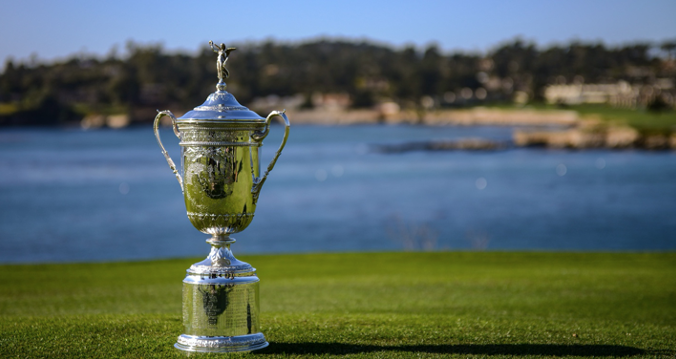This article delves into the shifting sponsorship landscape of golf tournaments, with a spotlight on an unprecedented influx of brands from luxury goods, fintech, and entertainment—stepping beyond traditional gear-and-apparel sponsors. It examines how these non-endemic sponsors are reshaping tournament presentation, prize funds, digital marketing strategies, and what all this implies for the sport’s identity.
Historical overview: From clubs & apparel to lifestyle and entertainment sponsors
For decades, golf’s sponsorship foundation lay firmly within gear and sportswear. Callaway struck a monumental $40 million deal with Phil Mickelson over five years, enforcing brand logos on his bag, visor, and sleeve. TaylorMade cemented a $10 million-a-year, ten-year equipment and bag deal with Rory McIlroy, using 14 TaylorMade clubs and carrying a TaylorMade bag to market the company thoroughly. Rolex, often viewed as par for the elite course, inked a ten-year, $192.95 million agreement as official timekeeper of the PGA European Tour, a partnership mirrored by their extensive portfolio of 14 active golf sponsorship deals.
Gradually, lifestyle and luxury brands extended into golf. Mercedes-Benz targeted high-income fans, sponsoring major tournaments and aligning with icons like So Yeon Ryu, Inbee Park, Rickie Fowler, Jon Rahm, and Bernhard Langer. The Rolex Series, launched in 2017, elevated select European Tour events—each boasting elevated purses, reaching $9 million per event by 2023. This signaled luxury branding moving firmly into marquee events.
Benefits and challenges of non-traditional partnerships
Non-traditional sponsors often inject capital that amplifies both purse size and spectacle. LIV Golf’s Saudi-backed league features a staggering $405 million event league purse, with individual seasons delivering tens of millions in prize money and team incentives. The Australian LIV Golf event, drawing record ticket sales and engaging new audiences, raised stakes with a $US25 million ($39.7 million) prize purse.
Sponsors beyond golf’s core category often demand advanced digital activations. Modern tournaments integrate branded mobile apps, live scoring systems, and social engagement to create immersive fan connections. Digital sponsorships—such as live leaderboards, event websites, mobile engagement and registration platforms—offer adaptable, extended, and high-impact brand exposure.
Taking on non-endemic sponsors brings ROI challenges. Rights fees must be supplemented with activation investments—more content, endorsements, VIP hospitality, and advertising—to justify the elevated sponsorship levels. A blend of hospitality, tech-enabled engagement, and tailored brand messaging must sell value to both sponsor and tournament host.
Case study: LIV Golf partnership tiers and fintech innovation
LIV Golf unveiled a multi-year partnership with HSBC as official international banking partner, launching at the Andalucia event at Real Club Valderrama and extending across the 14-event 2025 season. HSBC also sponsors Crushers GC (led by Bryson DeChambeau) and Majesticks GC (co-captained by Lee Westwood, Ian Poulter, Henrik Stenson).
LIV Golf’s most significant tech-centred deal to date is its multi-year commercial and technological partnership with Salesforce. Branding now appears on caddie bibs and course signage, integrating CRM and tech enhancements into the event infrastructure.
A landmark clash involving Rory McIlroy, Scottie Scheffler, Bryson DeChambeau, and Brooks Koepka featured a wholly cryptocurrency-based prize fund. Sponsored by Crypto.com—part of a wave of broader crypto sports sponsorships—this $10 million purse denominated in CRO tokens offered winners flexible payment options.
Predicting sponsorship shifts as golf modernizes its brand appeal
Golf’s trajectory points toward alliances with entertainment and fintech players. As seen with Crypto.com and fintech bank HSBC, the lure of affluent, engaged golf audiences is drawing brands far removed from golf’s traditional sphere.
LIV Golf CEO Scott O’Neil envisions a future where events feel like festivals, wrapping golf with music, art, fashion, culture, and family-friendly environments. The Adelaide tournament exemplified that model—blending sport with lifestyle, capturing new segments beyond core golf fans.
Stephen Curry’s Underrated Golf Tour signals how brand alignment with community and inclusion offers new value. Title sponsors like KPMG_us support diversity, while brands reach younger demographics—where 52 % of PGA Tour audiences are over 55—by connecting with youth, female, Hispanic, and Black golfers in growing numbers (+48 %, +41 %, +25 %, +123 % respectively).
Luxury integration elevates brand appeal—mirroring Formula 1’s $1 billion, 10-year LVMH deal—but risks alienating regular fans through rising costs and exclusivity. Golf’s integrity lies in remaining accessible even as it entices high-end sponsors.
Tech-driven sponsorships—via apps, live leaderboards, digital platforms—offer sponsors vast reach, cost-effectiveness, and professional polish unmatched by physical signage.
Some entertainment brands have visibly aligned with golf…
Some entertainment brands have visibly aligned with golf specially in the last 5 years where social media has become that important, much like how top online casinos occasionally sponsor broader sporting coverage, adding link visibility while maintaining brand synergy with event prestige. By associating with exclusive tournaments or star players, these brands amplify visibility, tap into affluent audiences, and reinforce golf’s aspirational allure—without compromising the sport’s refined image.
Aftermath
Golf sponsorship has evolved from equipment and apparel households to partnerships with fintech, entertainment, lifestyle, and luxury entities. These non-traditional brands amplify purses, diversify digital marketing, and introduce festival-style experiences, while requiring sophisticated activation to achieve ROI.
As golf embraces modern branding opportunities—from Crypto.com’s champ-length purse in CRO to HSBC’s global bank sponsorship—it must nurture inclusivity and tradition. Balancing prestige, digital engagement, and integrity will define golf’s sponsorship future.
Read the full article here

